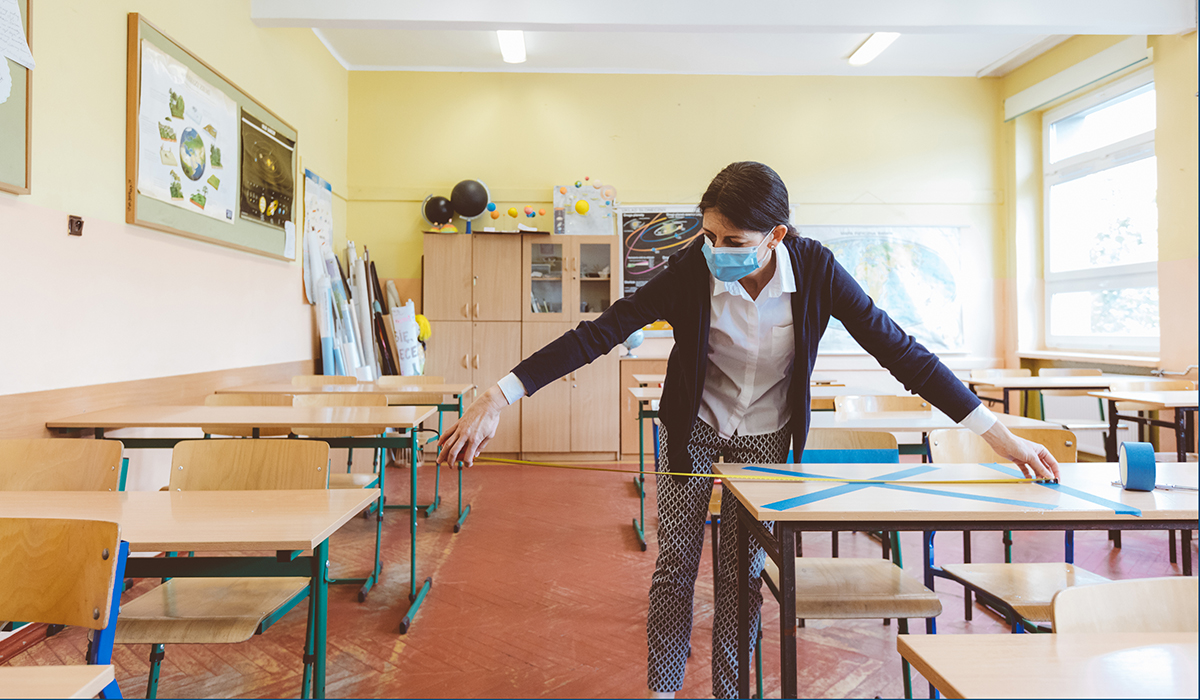A Jan. 19 letter to Gov. Gavin Newsom from CSBA and four other education management organizations acknowledged the shared goal behind the state’s Safe Schools for All plan of returning students to in-person instruction, but pointed out several areas that should be adjusted to make the plan feasible for the majority of students in California. The letter was also signed by the Association for California School Administrators, California Association of School Business Officials, California County Superintendents Educational Services Association and Small School Districts’ Association
“The purpose of our letter is to lay out a path that can help local educational agencies (LEAs) to succeed under this proposal,” the letter reads. “For the Safe Schools for All plan to effectively support LEAs, the plan’s testing requirements must be attainable for school districts, the proposed funding inequities must be remedied, schools currently open for in-person instruction must be protected and collective bargaining must be addressed. Without these changes, we question the efficacy and merits of such an immense Proposition 98 investment.”
Safe Schools for All funding
COVID-19 testing and other health-related expenses are inappropriate uses of the Prop 98. “Every dollar of Proposition 98 spent on public health is a dollar that is no longer available to benefit students for instructional support, social-emotional services and learning loss mitigation,” the letter reads. The organizations recommend using non-Prop 98 funding for the non-instructional of the plan or using federal stimulus funding to backfill the Prop 98 funding spent on COVID-19 expenses.
The letter further states that the testing cadence required in the plan will exacerbate educational inequities as local educational agencies in communities hit hardest by the virus will be required to test significantly more than those in the lower tiers and will spend significantly more than schools in districts with healthier communities — problems often caused by systemic inequities.
Because COVID-19 testing for students and staff is central to the reopening plan, it is critical that schools actually have the capacity to operationalize and pay for the new testing requirements. Currently, the vast majority of LEAs do not believe such a path exists. The difficulty of implementing the proposed testing cadence prior to the proposed deadlines cannot be understated, especially because LEAs in the red and purple tiers account for 99.9 percent of the state’s population. As just one possible solution, the organizations recommend requiring testing under the new cadence to the extent possible in light of potential capacity issues at state and private testing labs or lack of consent from some parents and staff.
Support for schools that are open now
Though the state does not track an official number at this time, there are a number of districts in a majority of counties providing in-person instruction despite the obstacles posed by this pandemic. These schools have adopted plans with community approval to safely return to in-person instruction. There is great concern that some of these schools may not be able to stay open under new statutory and other requirements (COVID-19 School Safety Plan, California Department of Public Health checklist, CDPH guidance and CDPH directive). These requirements require every LEA to update their reopening plan and renegotiate collective bargaining agreements. Recommendations in the letter include a clearly articulated two-track plan for schools that wish to remain open without accepting the grant and the state provide templates for safety plan updates to reduce the steps needed for schools currently open to remain open.
Collective bargaining
Given existing body of both state and federal law governing collective bargaining, we strongly urge any new statutory or public health requirements to neither suggest nor require additional collective bargaining. It is inappropriate to mandate that LEAs submit collective bargaining agreements that “support implementation of their COVID-19 School Safety Plan” because of the sufficiency of existing law, the plan’s urgent timelines and the limited capacity of local school and labor leaders to again adapt to changing set of rules. The plan should simply align with the language used in the Jan. 14, 2021, CDPH guidance: “For local educational agencies whose employees collectively bargain,” the LEA must submit “evidence of consultation with labor, parent, and community organizations, as either recommended or required under applicable CDPH guidance.”




